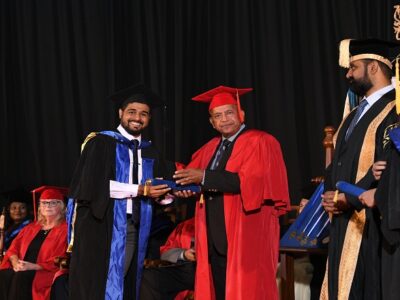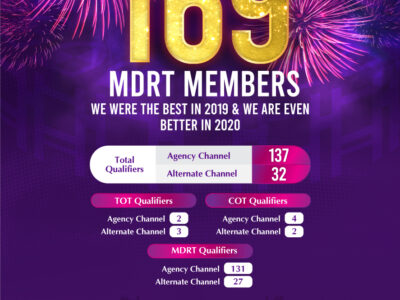(COLOMBO, LANKAPUVATH) –As I look out at 2019, there’s certainly plenty to be optimistic about – revolutionary new technologies are fueling the 4th Industrial Revolution and positively impacting how we work, live, connect and play.
It’s exciting to see technologies such as Artificial Intelligence (AI), Mixed Reality (MR) and the Internet of Things (IoT)becoming key drivers for digital transformation and making a positive and lasting impact on our society and environment. In Australia, for example, the Department of Primary Industry and Resources for the Northern Territory Government is using AI and IoT to identify and analyze hundreds of precious fish species in one of Australia’slargest harbors. This massive undertaking will ensure fisheries’ resources are sustainably-managed, protected and developed for future generations.
Although there is good reason to be generally optimistic about economic and societal prospects for 2019, some business leaders have also confided in me that they see significant challenges ahead.
In particular, many industries are being disrupted, sometimes even revolutionized, by the adoption of digital technologies and processes, often bringing with them new and more agile competitive entrants to their industry.
How should established industry participants respond to these kinds of disruptive challenges?
In late 2018, Microsoft’s CEO, Satya Nadella, introduced the concept of “tech intensity”, where organizations can embark on accelerated digital transformation journeys by adopting technologies much faster than before and focusing on building their own digital capabilities.
In 2019, to help organizations embrace and drive“tech intensity”, here are five technology decisions that Asian CEOs should make as we enter the new year:
- Modernize your data strategy: If we compare a digital organization to the human body, then data isthe blood that provides nourishment and allows it to grow.
In large organizations across Asia Pacific, the challenge is often not about the availability of data, but the vast effort needed to manage the almost-uncontrollable growth of theorganization’sdata estate. For example, banks today need to track and analyze tremendous amount of unstructured data coming in from new channels such as connected devices, new customer touchpoints and 3rd party data flows. They also need to factor in additional resources to cope with increasing regulatory and compliance requirements.
CEOs need to prioritize the redefinition of their organization’s entire data strategy, from creating a secure platform to managing and harnessing data to creating a corporate culture where the workforce embraces data in their daily work. It is only with a sound data strategy that organizations can truly optimize new digital transformation technologies, such as Artificial Intelligence.
- Accelerate full cloud adoption:There was a time, not that long ago, when CEOs would ask me: “Should we move our data to the cloud?”. Now, increasingly, they are asking: “Can we afford not to?” The question is not just one of economics (although, for most customers, the ROIof moving to the cloud are highly – and increasingly – compelling). They are also considering the risks of maintaining their own on-premise security data-centre infrastructure, including hardware, software, physical and operational security, hiring IT security experts and meeting statutory or industry standardsand certifications.Many large customers now opt for a hybrid cloud strategy that combines both public and private cloud by allowing data and applications to be shared between them. This approach gives businesses the ability to seamlessly scale their on-premises infrastructure via the public cloud when required – without giving third-party datacenters access to the entirety of their data.
- Workforce reskilling is a new CEO priority: Many of the CEOs I speak with are excited about AI’s potential to increase productivity, reduce costs and accelerate innovation. For example, Airdoc, a fast-growing start-up from China, uses AI to help detect medical problems by examining a patient’s eyes in less than a second. Its potential to transform patient care is limitless. But would healthcare organizations be able to seamlessly integrate Airdoc’s AI solution into healthcare professionals’ workflow if they do not have the necessary training?
CEOs need to focus increasingly on workforce reskilling in their digital transformation journeyto ensure that their people and processes are aligned to optimize the new technology. Without that, AI projects are likely to fail because of the lack of digital expertise to utilize the technologies and the absence of data skills to derive actionable insights.
- Cultivate a new digital mindset:To paraphrase Peter Drucker, culture eats technology for breakfast. No amount of new technology application will deliver an organization’s true digital transformation unless it is accompanied by a corresponding change in culture; one that embraces an open mindset and favorsexperimentation, learning and growth. At Microsoft, we laid this foundation over four years ago when we underwent our own transformation, focusing on creating a ‘learn-it-all’, rather than ‘know-it-all’, culture. This change in mindset enabled us to, for example, embrace a dramatic transformation of our business model.
- Trustdefines the new digital organization:When it comes to customer trust, it has been said that it is often “earned in drips and lost in buckets”. Trust in your organization can takeyears to build andcan be destroyed in a single moment. This ethos resonates particularly deeply in today’s digital world where organizations face mounting cyberthreats as well as evolving regulatory and ethical expectations when it comes to online transactions and handling of customer data.
Ultimately, the responsibility for the creation and maintenance of customer trust sits squarely with the CEO,who needs to ensure that all elements of trust – including security, privacy, reliability, transparency, compliance and ethics – are embedded into all digital transformation initiatives right from the start.
Increasingly, CEOs also need to examine if their ecosystem of partnersrecognize and share the same trustprinciples as their own organization. Specifically, do the technology partners they entrust with their customer data have the same set of values, principles and policies – when it comes to the use of that data – as they do.
In summary, I believe that 2019 is the year of hyper digital transformation, where manybusiness leaders will start to take quantum leaps in their response to a new digital economy. To do so, CEOs need imbue their organizations with ‘tech intensity’ by focusing on the five technology decisions that I have outlined.




